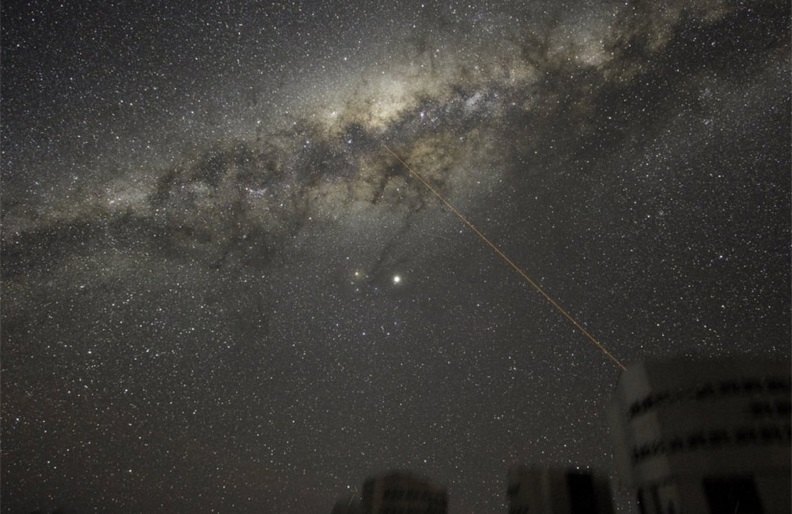Researchers began viewing crystals shimmer in the 1990 s. Those crystals sparkled more in the summer season, which scientists took as proof of dark matter. However those researchers were most likely incorrect, brand-new research study recommends.
Researchers have great factor to think that dark matter exists— that there’s some hidden things pulling on whatever with its gravity however that’s unnoticeable to our telescopes. However they do not understand what that dark matter is in fact made from. Physicists have some guesses. However scientists have never ever identified any direct proof to recommend that any specific guess is appropriate, with one possible exception: A single detector in Italy sparkled more in the winter season than the summer season, hinting that a specific design of dark matter was appropriate. Today, a brand-new experiment attempting to duplicate that yearly shimmer cycle has actually stopped working to show up considerable outcomes, suggesting that the Italian detector’s dark matter proof is most likely incorrect.
Read more: Dark matter Hurricane is hitting Earth the with speed of up to 310 miles per SECOND
Here’s the offer: One popular theory of dark matter states that the things is comprised of particles called “weakly engaging enormous particles,” or “SISSIES.” These Pansies would be heavy particles not explained in the Requirement Design of physics, though they would likely be supersymmetric partners of Requirement Design particles. Pansies would utilize their gravity to yank on other particles, hardly ever engaging with them otherwise.
Based upon how dark matter appears to act upon the light-emitting matter in deep space, scientists believe that the compound tends to cluster in galaxies, holding them together. That implies that if dark matter is made from Pansies, more of them must strike the Earth in June, when our world hurries towards the Galaxy’s dark matter halo, than in December, when our world hurries far from that region.Fortunately for group PUSHOVER, a single experiment appeared to support that hypothesis.
In an underground location in Italy, photon detectors look at salt iodide crystals throughout the day and night in the darkness, searching for traces of light. Those crystals shimmer when they engage with other particles, and because buried location– called the DAMA/NaI experiment– Pansies would be amongst the only other particles around.As early as April 1998, simply 3 years after the DAMA/NaI experiment started, scientists reported in the journal Physics Letters B that the crystals appeared to illuminate more in the summer season than the winter season. That was precisely what scientists anticipated to see if dark matter was truly comprised of Pansies. As just recently as 2017, scientists taking a look at information from the 1995-2002 DAMA/NaI experiment and the updated DAMA/LIBRA experiment, which started in 2003, reported proof for a yearly shift in the crystals’ habits.
However those outcomes have not stood effectively in duplication efforts.
The Xenon100 detector, likewise in Italy, likewise looked for Pansies– though it did so by gazing at xenon, not salt iodide, in a dark chamber. By 2010, it was clear that XENON100 wasn’t going to identify DAMA’s yearly signal Another, larger xenon search, this one in China, reported no outcomes previously this year Nevertheless, still another experiment– called SOUND, based in Minnesota and depending on a single portion of germanium– did appear to duplicate DAMA’s yearly signal.
The current news, nevertheless, is bad for DAMA. On Wednesday (Dec. 5), scientists at the Cosine-100 detector in South Korea released a paper in the journal Nature reporting that they ‘d seen no annual shift in their more recent, fancier detector. That’s a huge offer, since Cosine-100’s light sensing units are viewing underground portions of salt iodide, much like DAMA’s. So if DAMA had actually discovered a genuine outcome, it needs to appear in Cosine-100 also.
Read more: Black Holes Ruled Out As Universe’s Missing Dark Matter
” The outcome of this search is considerable since, for the very first time, we have significant sodium-iodide crystal detectors with sufficient level of sensitivity[test DAMA’s claims] It has actually been for 20 years that the possibly considerable claim has actually not been replicated utilizing the exact same crystals separately,” Hyun Su Lee, Cosine-100 co-spokesperson, stated in a declaration
Scientists still do not understand what triggered the yearly signal or why it appeared in DAMA however not Cosine-100 However the Korean group stated it hopes an approaching upgrade to its detector will show up much better information to assist solve the secret of dark matter and the DAMA signal.
Initially released on Live Science

